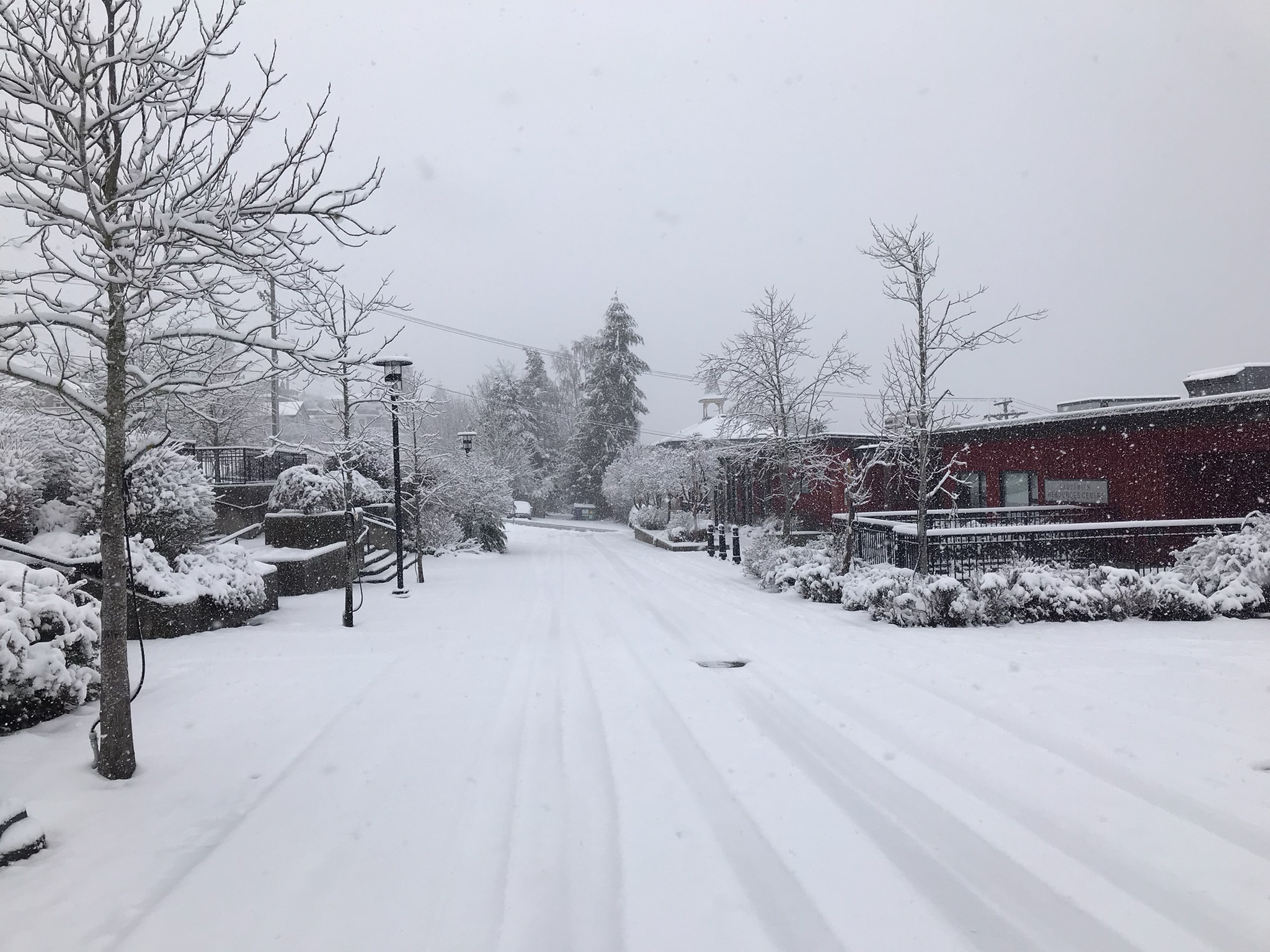Winter is coming.
Not in the epic, Game of Thrones way, but in the more familiar Canadian style.
You know, that special time of year when the roads get greasy, the snowplows magically appear just after you needed them, and at least three people in your town put their pickup in the ditch while insisting they are “great winter drivers.”
Into this swirling mess of ice, slush, and misplaced confidence comes my daughter, Beth-Rose.
She got her license in August. Which means she has exactly zero real experience driving in winter. No black ice. Zero whiteouts. No “is this lane or a suggestion” kind of snow. Just dry pavement and the occasional drizzle.
And here on Vancouver Island, winter likes to keep you guessing. Some years we get nothing. Some years we get snowpocalypse. Sometimes it melts in a day. Sometimes it freezes, snows again, and turns the side streets into a curling rink.
It is a terrible training ground for a new winter driver. Or a perfect one, if we use it right.
I want her to learn the skills that might save her life. And, selfishly, I want to be able to watch her drive away on a winter day without my stomach doing backflips. Her first winter driving experience shouldn’t turn me into a puddle of stressed goo.
When Your Winter Is A Bit Of A Liar
Island winters are sneaky.
We do not get that reliable, locked-in “it is winter now” feeling that people on the Prairies get. They wake up one morning in November, step outside, inhale a lungful of razor blades, and know they will not see bare pavement again until April.
Here, we get rain.
And then more rain.
And then one morning, surprise, everything is white and no one remembers how to operate a vehicle.
If you are a new driver like Beth-Rose, the problem is that most of your practice happens in decent conditions. You do your lessons on wet roads, maybe some fog, a bit of spray from trucks on the highway. But true winter driving is something else entirely.
I was lucky. My first winter driving lesson was in February, the day after an epic Montreal freezing rain storm. I spent the first 20 minutes of that lesson scraping an inch of ice off the windows of a 1976 Volare station wagon. Good times. Lots of windows. But good prep for learning winter driving.

So I am hoping for one or two snow days this year. Not blizzard-of-the-century snow, just enough that we can head to an empty parking lot and let her feel the car slip a little. Get used to what a skid feels like when you are not also trying to avoid the person who still thinks all-season tires are “fine.”
The goal is not to turn her into a rally driver. I just want winter to not be some mysterious, terrifying thing she only hears about when the news shows footage of cars pinballing down the Trans Canada. Her first winter driving experience should build a bit of confidence, or at least slightly less fear.
That Time I Drove Off The Highway And Took Another Truck With Me
A lot of what I want to teach her started years ago, when I worked for CP Rail.
Back then, the company sent us to a defensive driving course. At the time I thought it was a bit of corporate box-checking. A couple of days in a stuffy room, a few dramatic videos, some guy at the front telling us to leave extra space and scan ahead. But, given my own experience, I would highly recommend this to any new driver, or maybe anyone who drives!
But a lot of it stuck. And it showed up in my driving in ways I did not fully appreciate until things got properly ugly.
Like the time we were working in the Fraser Canyon in winter and a big storm rolled in. It was our last day of work before the weekend, and our crew was more than ready to head home to the coast. Hot shower, real bed, not waking up to the sound of freight trains all night.
There was just one little problem.
They closed the highway west of Hope because of whiteout conditions.
We did not want to stay another night. With apologies to Hope, but there’s more to do on a weekend in Vancouver. So we drove out of town anyway and found the highway entrance ramp blocked by a couple of police cars.
“Sorry folks, highway’s closed.”
Now, the correct response here is probably, “Right you are, officer, we will turn back and find a motel.”
Follow the Leader
Instead, we somehow convinced them that we absolutely needed to get to an emergency job in Chilliwack. Which is technically not untrue if you stretch the meaning of “emergency” to include “I would like to sleep in my own bed.”
So they let our two crew cabs through.
I was driving the big white truck, four guys with me, and the smaller blue truck followed behind. At first it was not too bad. A bit of snow, some blowing wind, the usual winter nonsense.
Then we got about twenty miles down the road into the Fraser Valley.
That is when it went from “this is not great” to “we have made a very poor life choice.”
The road disappeared.

Where’d it Go!?
Not just “hard to see the lines”. The road disappeared. I mean everything turned white. Road. Ditches. Fields. Sky. All of it. The world became a blank sheet of paper and we were just scribbling somewhere on it at 60 kilometers an hour.
The only reason I knew we were no longer on the highway was the angle of the truck. One minute we were level. The next we were lurching sideways as the wheels dropped off the pavement and we bounced down into the grassy, snow-covered median.
And, loyal souls that they were, the guys in the blue crew cab behind us followed us right off the road.

So there we were. Two trucks. Eight guys. Sitting at a strange angle in the middle of a whiteout, technically safe for the moment but with the sudden realization that maybe the police had not been overly cautious after all.
That day taught me a few things.
One, sometimes the road is closed for a reason.
Two, if you cannot see, you are not really driving, you are gambling.
Three, maybe I’m not the best person to be following.
These are the kind of stories I want Beth-Rose to hear. Not to scare her, exactly, but to give her a healthy respect. To understand that “I will just take it slow” is not a magic spell that overrules physics.
Also, to be very clear: she is not allowed to talk her way past a roadblock. Learned that one for her.
The Day Everything Went Sideways Outside Golden
The other story that lives in my head is not funny. It still haunts me.
Heather and I were driving to Calgary one Christmas. Somewhere outside Golden, we ended up in a little convoy of four or five vehicles behind a tanker truck. Straight stretch of highway. Snow around but the road itself was not terrible.
Up ahead, a car was coming toward us. Nothing unusual. Then his headlights dimmed, then brightened again. The sort of flicker that makes your stomach drop.
The driver had probably let his front right wheel drift into the soft snow along the shoulder and then overcorrected. That is how it often starts. A tiny mistake, a little panic, and suddenly a couple of tons of metal are doing their own thing.
The car started to spin.
The tanker in front of us braked. I eased off and moved as far over to the right as I could without putting us into the snowbank. And then I just waited for the impact.
The spinning car missed the tanker. Which meant we were next on the menu.
Lessons Learned and Applied
Here is the part that has stayed with me for years. Back in that defensive driving course, they stressed one thing over and over.
Do not stare at the thing you are trying to avoid.
Look where you want to go. Your hands follow your eyes. Your car follows your hands. It sounds simple, but it is completely against your instincts.
When something is coming at you, every cell in your body wants to lock onto it. You get tunnel vision. You fixate on the threat.
The instructor told us, “If you stare at the other car, you will unconsciously steer toward it.”
So as that spinning car came at us, I deliberately did not look at it. I focused on the sliver of road where I wanted our car to be. Right side, clear space, steady line.
The car spun past us. I knew he was going to hit our back end. I could feel it coming.
Except he did not.
He missed us completely and slammed into the car behind us.
People died that day. The driver of the spinning car. At least one person in the car behind us.
There is no neat bow to tie on that. No clever line. It was awful. And unfair. We drove away. They did not.
But I know one reason we were not the ones getting hit. It was that simple, drilled-in habit. Look where you want to go, not at the thing you fear.
That is one of the things I want Beth-Rose to know, deep in her bones, long before she ever has to use it. And may she never have to use it.
Teaching Your Kid To Drive Without Losing Your Mind
So here we are. Winter creeping closer. My daughter itching to take the car wherever she wants. Me pretending to be calm while my brain runs simulations of every possible bad scenario on Highway 1.
I want her to have fun driving. To enjoy the independence. To go for hot chocolate with her friends on a snowy evening without me pacing the living room, staring at my phone like it is a heart monitor.
But I also want her to respect what can happen when conditions change.
So this winter, my plan looks something like this:
- Find an empty lot on a snowy day. Let her feel a skid in a controlled place. Get used to the feeling of the back end stepping out and what it means to “steer into it.”
- Talk through the “what ifs” while we are calm. What if you hit black ice. What if you cannot see the lane markings. And what if the car in front of you spins. Better she pictures it now than for the first time at 80 km/h.
- Share the stories, but keep them grounded. Not to terrify her, but to show that serious things can happen to ordinary people on ordinary drives.
- Hammer home the boring stuff. Slow down sooner. Leave more space. Lights on. Good tires. If conditions are bad, maybe you just do not go. Being late is not a tragedy. Not coming home is.
In other words, all the things I wish someone had told me when I was nineteen and bulletproof.
Good Habits
Winter driving is serious. Lives are at stake. I have seen what happens when things go wrong and I do not want that for her.
But it does not have to be pure fear, either. With some practice, some good habits, and a healthy respect for physics, it can just be another part of driving. Her first winter driving experience she’s prepared for instead of surprised by.
And maybe, if I do my job right, there will come a day when the snow is coming down, the roads are greasy, and I watch Beth-Rose drive off down the street.
I will still worry. I am her dad. That is part of the deal.
But maybe I will worry just a little bit less.



Sound advise. Good article Mike.
Thanks Ean!